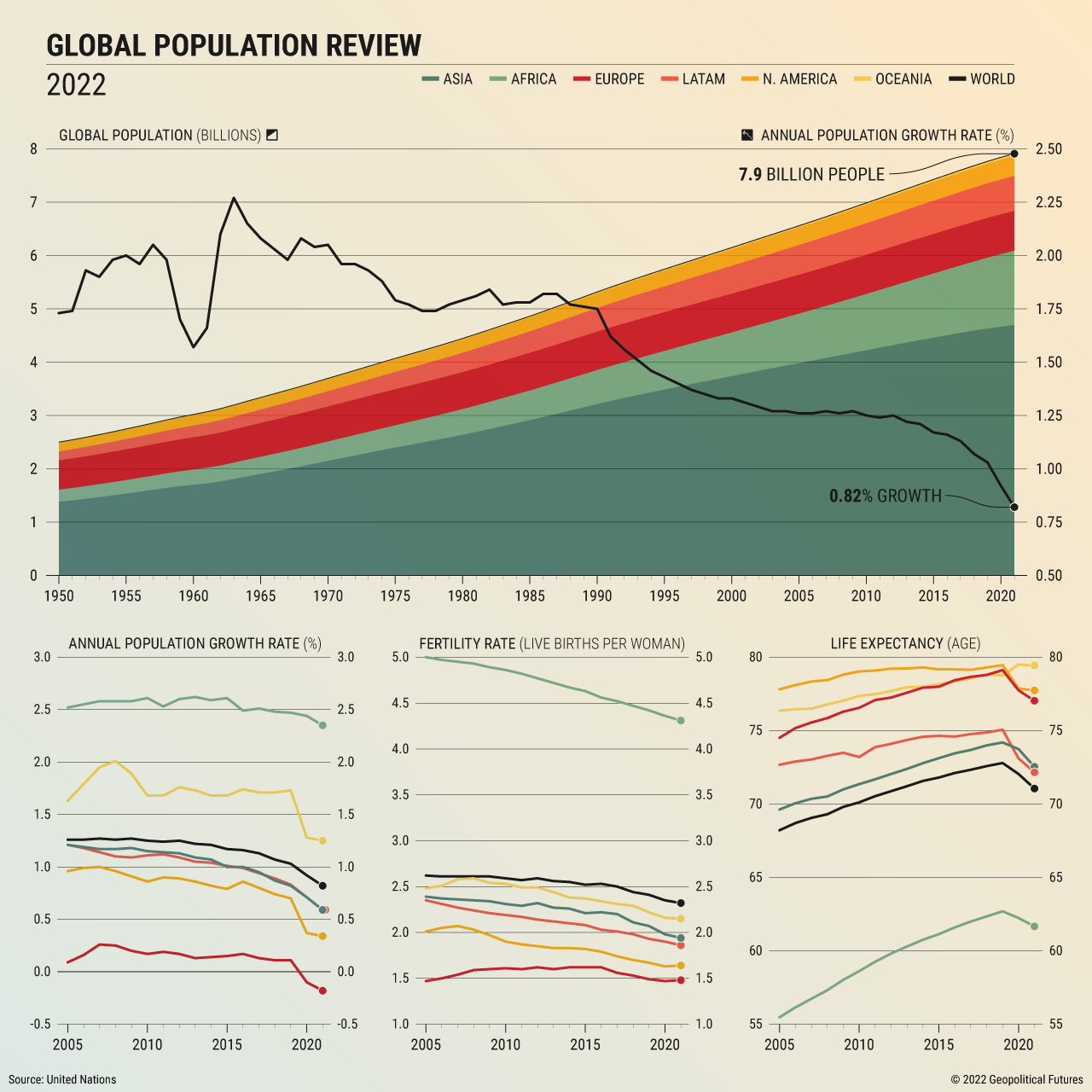Over the long term, demographics affect geopolitical trends and state behavior. Population size has implications for public pension systems, economic growth, food demand and more.
In November, the global population is expected to reach 8 billion, before climbing to 9.7 billion in 2050. India will also soon surpass China as the most populous country. Global population growth, however, is slowing. Two-thirds of the population shows lifetime fertility below the 2.1 mark per woman needed to support population growth. That said, longer life spans are also a notable contributor to global population growth. There are roughly 771 million people over the age of 65, triple the number in 1980. This figure is expected to grow in the years ahead, particularly in East Asia, Southeast Asia, Europe and North America.
It’s also important to note differing trends around the world. The states of the Baltics and Balkans, as well as Japan, account for the 10 sharpest declines in population in coming years, ranging from 16 percent to 22 percent. Sub-Sahara Africa, on the other hand, will account for more than half the world’s anticipated population growth to 2050. The countries leading global growth include the Democratic Republic of Congo, Egypt, Ethiopia, India, Nigeria, Pakistan, the Philippines and Tanzania.






